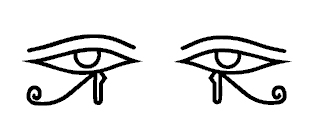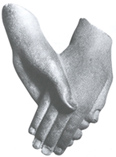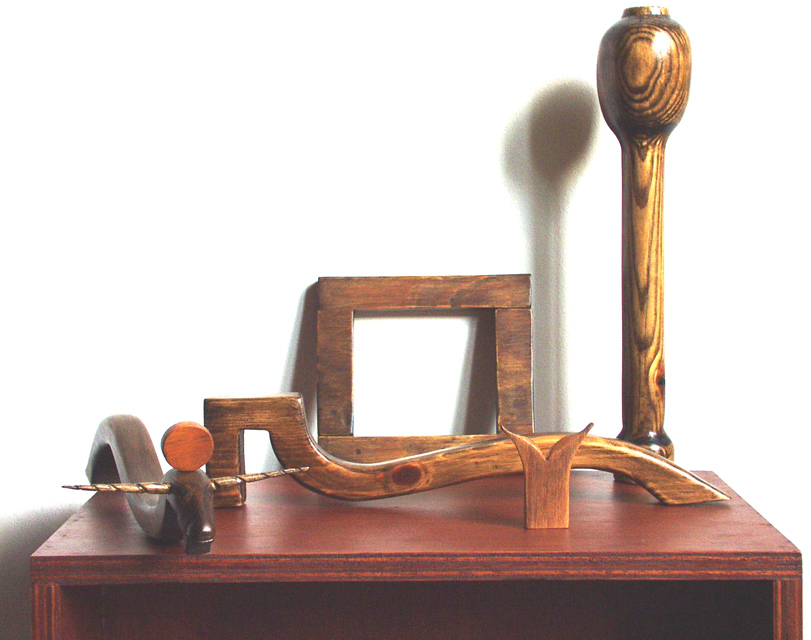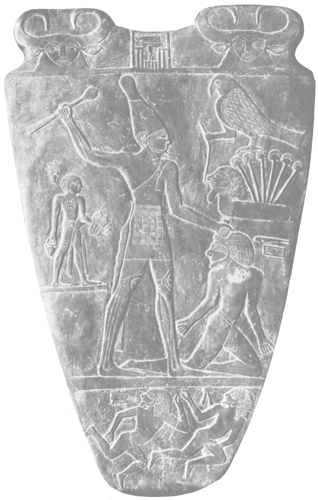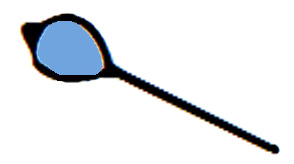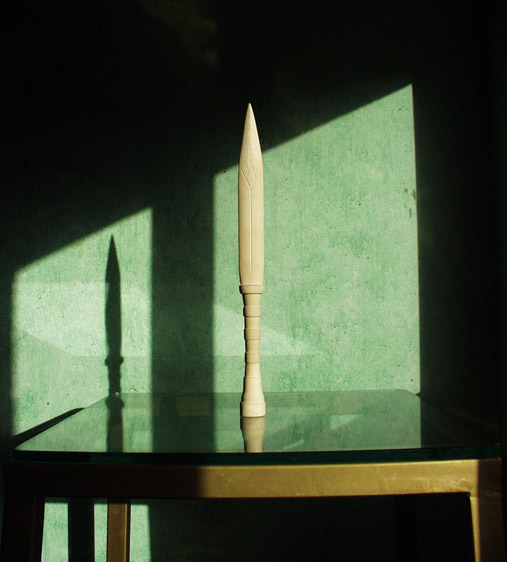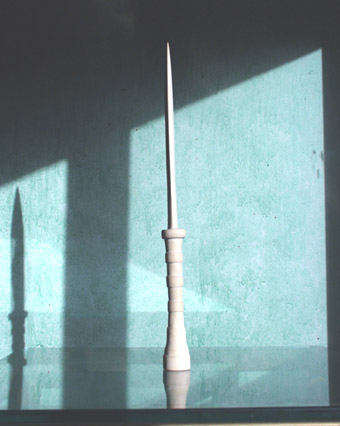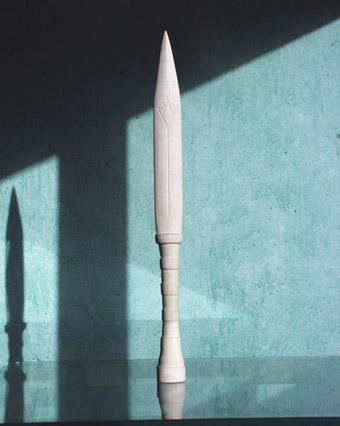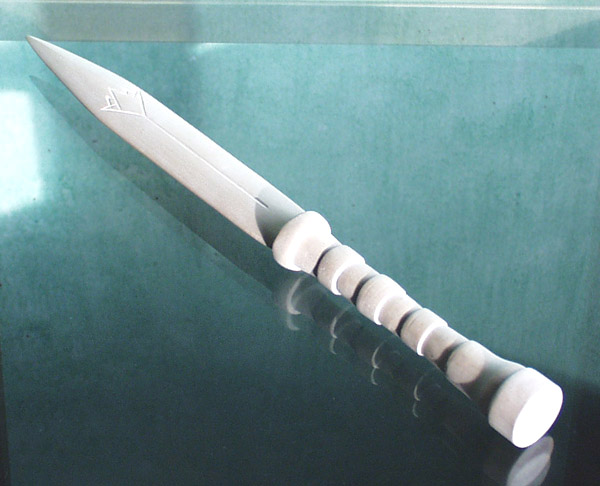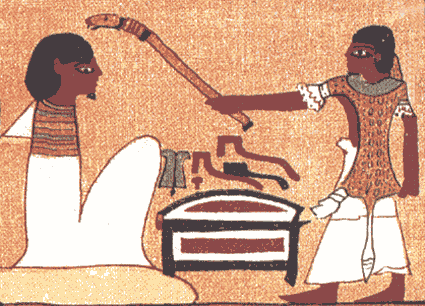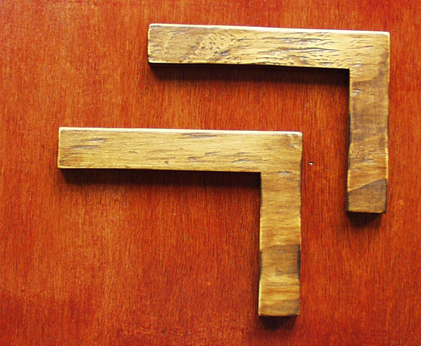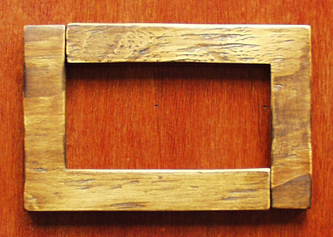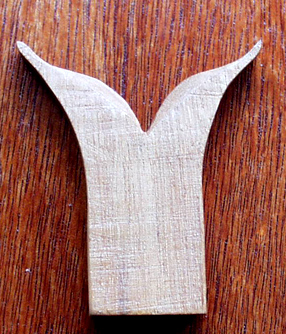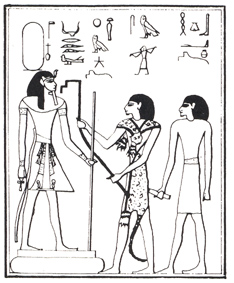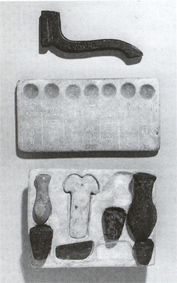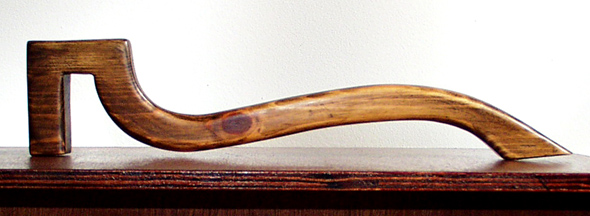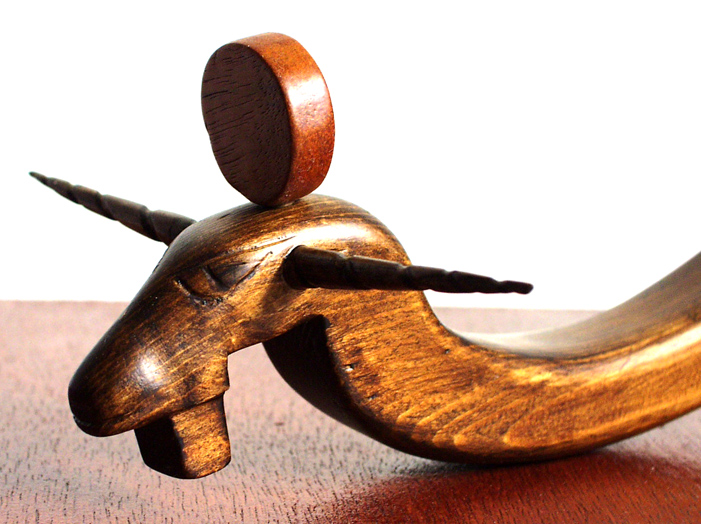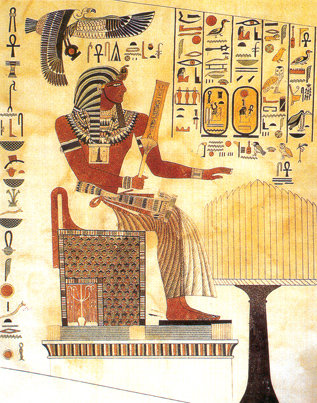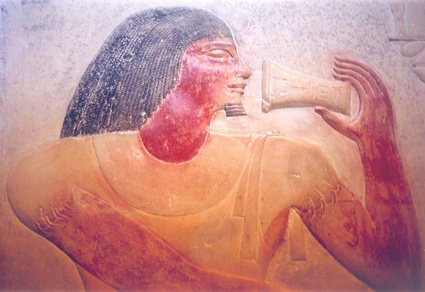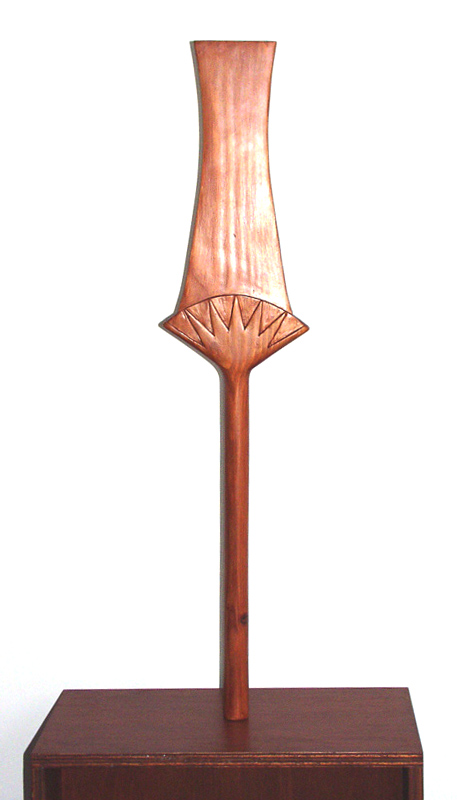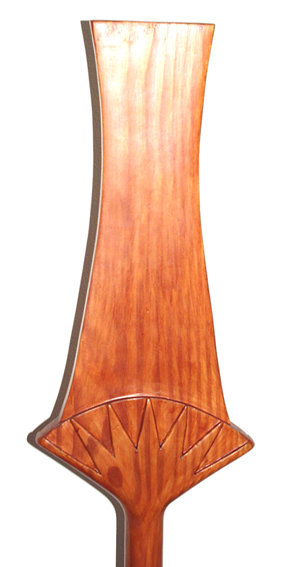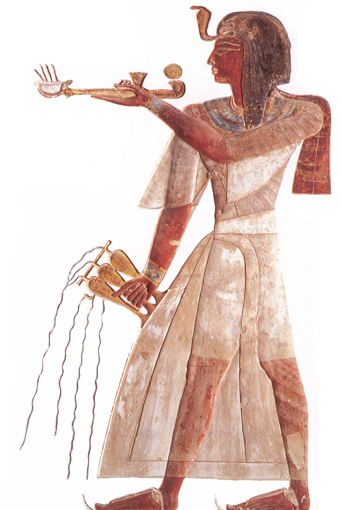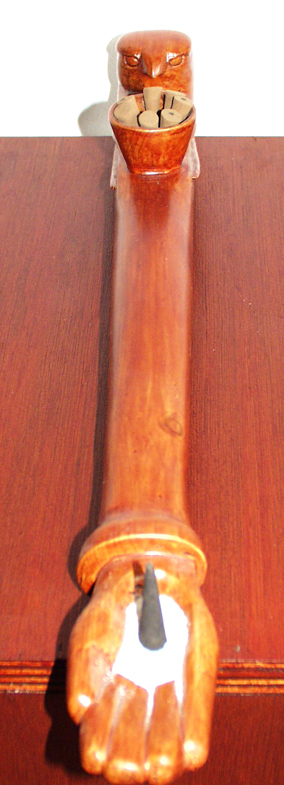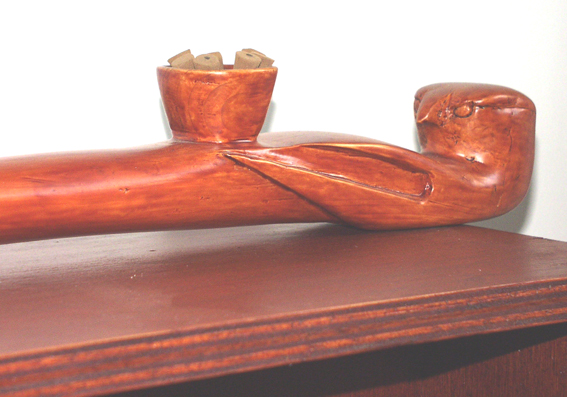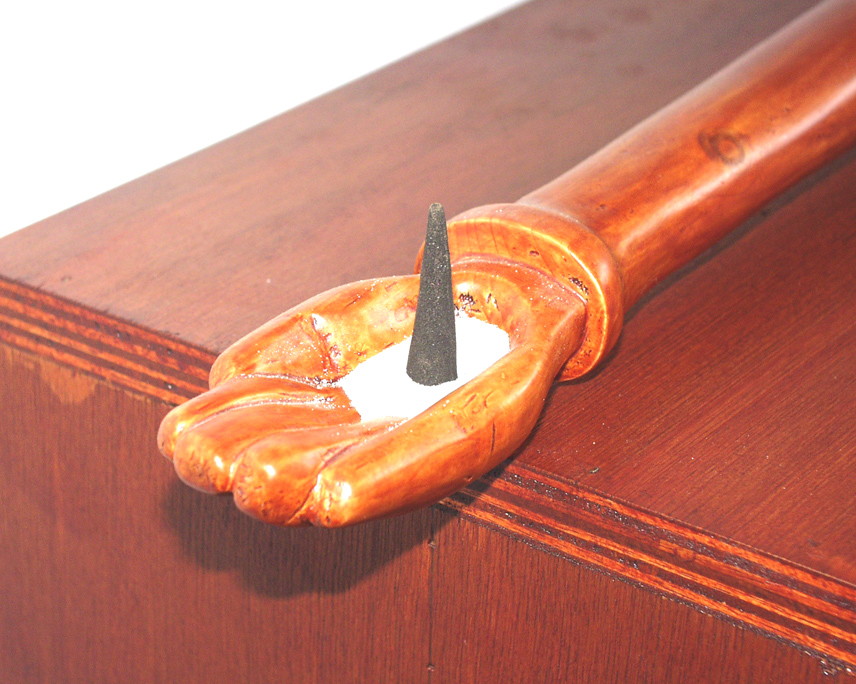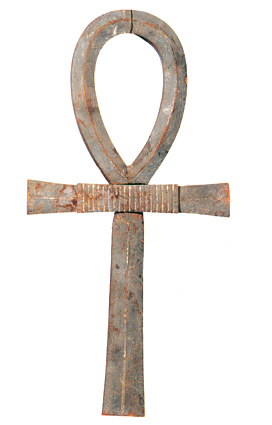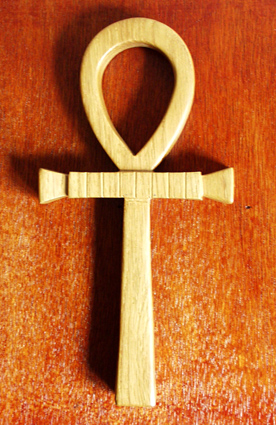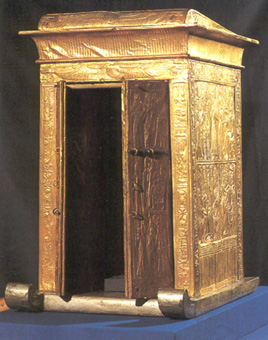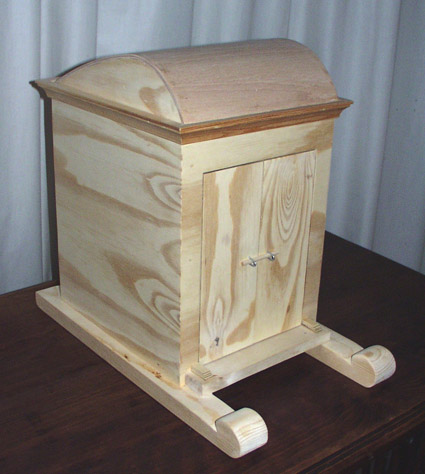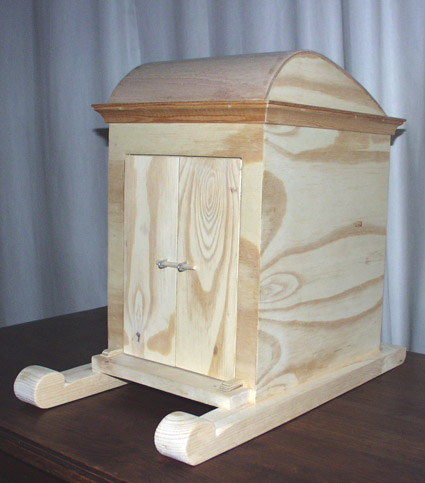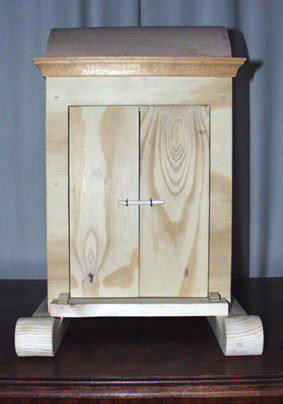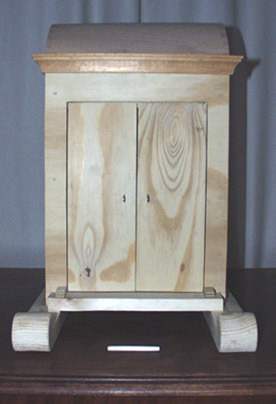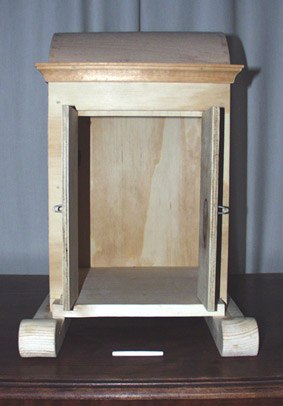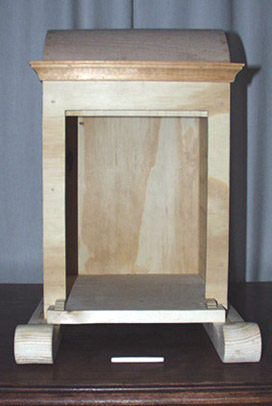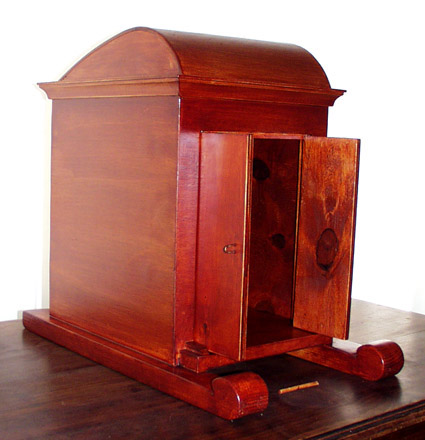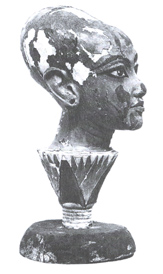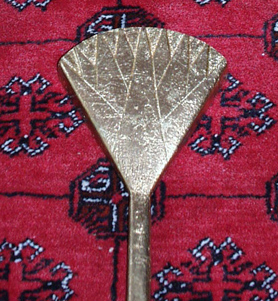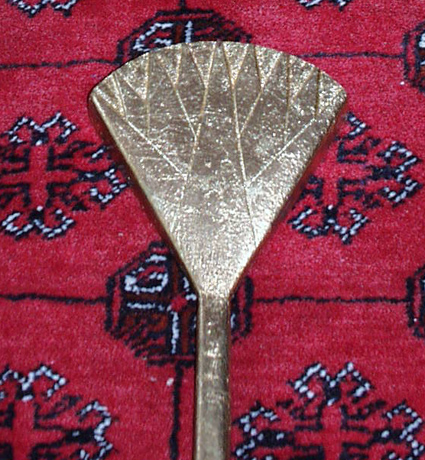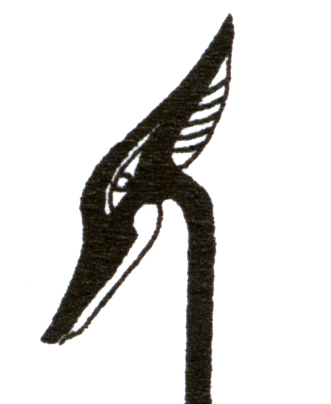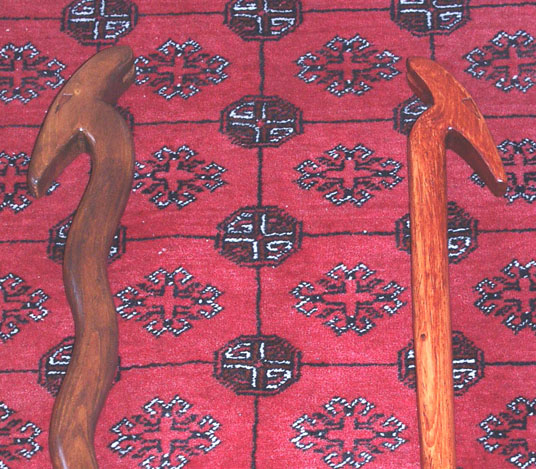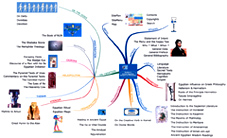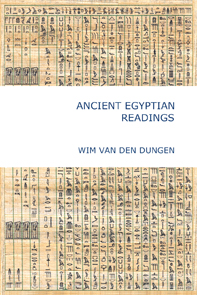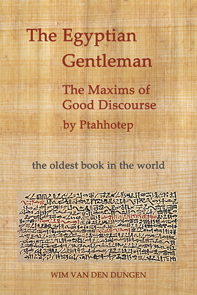|
|
|||||||||||||||
|
|||||||||||||||
|
As this 4000-years-old model suggests, wealthy Ancient Egyptian estates & temples also had a workshop for laborers skilled in carpentry. Here we see an dozen carpenters working in a small workshop, in the left corner of which is a doorway. On the large, white chest a number of tools, very similar to those still used today, are displayed : chisels, axes, saws & blades of various sizes. In the centre of the workshop, a carpenter is sawing a piece of wood fixed to a vertical post. We see workers finishing planks and, in the right corner, kneeling figures tempering tools in a hearth. |
|||||||||||||||
|
Since Imhotep, working under king Djoser (ca. 2654 - 2635), the canon of Egyptian Art never changed, nevertheless allowing, not unlike Egyptian hieroglyphs, for creative variation & accommodation. |
|||||||||||||||
|
from left to right : Ur Hekau - Seb Ur - Netjerui - Pesheskef - Hedj
HEDJ
The HEDJ or Ritual Mace, associated with the act of smiting an enemy, has been represented numerous times. It is a potent symbol of power and protection against negativity. Egyptian rituals (except for festivals and other public ceremonies) were private and very well protected. The most sacred of ceremonies (the Morning Ritual, involving meeting the deity "face to face" and offering it Maat, truth & justice), took place in the "naos" in the darkest part of the temple, and could only be performed by the king or his representative (the officiating high priest).
BAGSU It is clear the Egyptians used daggers for self-protection, close combat & warfare. They were also pieces of adornment. The ceremonial meaning of daggers is unclear. Their use to "close" and "open" magical circles was, as far as I know, not part of the Egyptian ritual. However, as a dagger was found on the mummy of Tutankhamun (ca. 1333 - 1323 BCE), we may at least speculate a funerary function in the Duat, reflective of a this-life symbol of direct protection & the mastery of dangerous power.
Ceremonial Dagger : Blank Ramin Wood - H.36 cm
dagger found on Tutankhamun - golden cloisonné with precious stones & paste of glass On the active side of the Ceremonial Dagger, a Lotus is represented with its top pointing outward (on the dagger of king Tut, the Lotus points inward, toward the hand). This to indicate the use of the Dagger is only permitted to protect Life, Light and Love, symbolized by the Blue Lotus, never to operate death, darkness and hatred.
Except for the Ritual Mace, this first set of ritual tools
is used in the ceremony known as the "Opening of the Mouth".
The Sem priests were usually not associated with any
temple. These mortuary priests oversaw and conducted the long &
complicated funerary rituals. The deities associated with this priesthood were
Osiris, Anubis, Sokar &
Ptah (Sauneron,
1960). Besides the ritual garb of a leopard skin worn over their white shift,
they also wore the side-lock of youth as opposed to being completely shaved.
NETERUI
Neterui : Pine Wood - L.18 cm x 13,5 cm
PESHESKEF
Pesheskef : Pine Wood - H.7 cm
SEB UR
Left : Book of Opening the
Mouth, 24th Ceremony (Budge,
197, p.90).
Seb Ur : Pine Wood - L.38,5 cm Like the NETRUI & the PESHESKEF, the SEB UR was originally made out of iron, although wood replicas have been found. This ceremonial adze, also known as Meshtiu (a name of Ursa Major), was taken by Horus from Set to restore Osiris. UR HEKAU
Ur Hekau : Pine Wood - L.35 cm
The UR HEKAU was also the master of powerful words and gestures. With his great speech ("djedet uret"), he uttered the sacred names of the deities and knew the words of power needed to invoke them. The patron of the UR HEKAU was Isis, the embodiment of magic, and the most powerful goddess of the pantheon.
SEKHEM or
"power"
Kherep/Sekhem : Pine Wood - H.90 cm AN HERU
offering libations & incense
An Heru : Pine Wood - L.62 cm
Left : Reign of Amenhotep II - mid
XVIIIth Dynasty - ca. 1427 - 1400 BCE KARA
Miniature shrine - XVIIIth
Dynasty - ca. 1325 BCE.
Shrine - H.43cm - L.50 cm
The "naos" is a Greek word denoting a small shrine or sanctuary intended to house the cult statue of the Temple. It was made out of stone or wood and not open to general worship.
Shrine - H.43cm - L.50 cm The shrine was rectangular in shape and could also be used for mortuary statues, mummified remains of theophanic creatures and symbols associated with the particular deity. Only high-ranking priests could enter the sacred precincts and worship the deity face-to-face (cf. the Morning Ritual). LOTUS STAFF OF REBIRTH
Head of Tutankhamun emerging
out of a Lotus
"I am the pure lotus coming forth
from the god of light, the guardian of the nostril of Re, the guardian of
the nose of Hathor. I make my journey. I run after him who is Horus. I am
the pure one coming forth from the field."
Lotus Staff : Gold Leafed Pine Wood - H.110 cm
The Blue Lotus or Nymphaea caerulae has pointed
petals and is most frequently depicted in art, often held to the noses of
banqueters in tomb scenes. Herodotus, the Greek historian, tells us parts of the
plant were sometimes eaten. Recent study suggests the lotus had hallucinogenic
properties. WAS & DJAM
The WAS is depicted in the hands of nearly every god.
It has a straight shaft topped by the head of a canine animal and a base
ending in two prongs. Its primary function was to ensure the continued
welfare of the bearer, his power and dominion. Later, it became associated
with prosperity and well-being.
Left : Is the totemic animal topping
the Was the mysterious Set-animal ?
Until the Middle Kingdom (ca. 1938 - 1759 BCE), the
WAS scepter was represented in wood alongside the mummified body. Rows of WAS-scepters were used in the decorative friezes on coffins
and in
tombs. It may also have been used as a gnomon (the
upright section of a Sundial), symbolizing the divine measurement of time.
Adorned with streamer & feather, the WAS became the emblem of the Theban province
of Waset.
Djam & Was : Pine Wood - H.158 cm Unlike the straight WAS, the DJAM has a spiral or twisting shaft. Its image is rarely seen. With the integration of Osirian faith in the royal ritual as early as the Vth Dynasty, all Setian icons were avoided. In the New Kingdom text called The Contending of Horus and Set, an angry Set threatens the deities to take his heavy DJAM-sceptre and kill one of them each day ! The DJAM is used to destroy. The WAS is used to construct and uphold (the sky).
Preluding the two Pillars in Qabalah, they represent complementary forces kept in balance by a third factor. This "tertium comparationis" is the state of harmony leading to rebirth (cf. the LOTUS staff). |
|||||||||||||||
|
siteplan - sitemenu - search - general info - copyrights 
initated : 30 IX 2007 - last update : 09 XII 2009 |
|||||||||||||||

